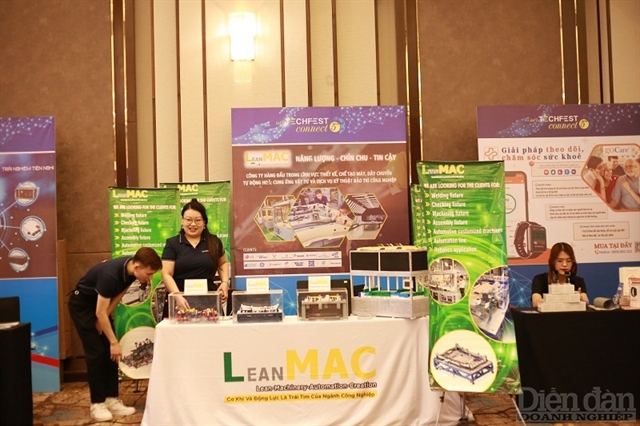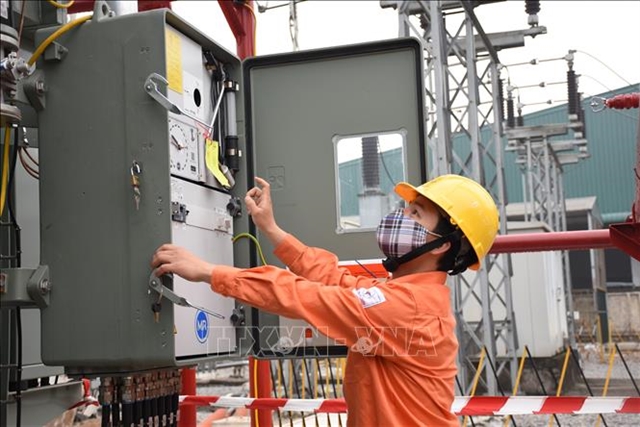 Society
Society

" />The number of Vietnamese women and girls in STEM (sciences, technology, engineering, and math) fields remains low, mostly due to social and environmental factors, Dr Lê Thị Kim Phụng, deputy head of HCM City University of Technology’s chemical engineering faculty, said yesterday at a conference held in the city.
 |
| Women at the Science, Technology, Engineering, and Math 2017 Conference convened to focus on the evolving role of women in Vietnamese society, especially STEM fields, in HCM City. — VNS Photo Gia Lộc |
HCM CITY — The number of Vietnamese women and girls in STEM (sciences, technology, engineering, and math) fields remains low, mostly due to social and environmental factors, Dr Lê Thị Kim Phụng, deputy head of HCM City University of Technology’s chemical engineering faculty, said yesterday at a conference held in the city.
“There are very few senior women ahead on the path, and mentoring opportunities are rare. But just knowing those few women achieved success gives me hope,” said Phụng, who won the ASEAN-US Science Prize for Women last year for her research on biofuels created from agricultural waste such as rubber seed oil, ground coffee and fruit.
Phụng spoke at the Women in Science, Technology, Engineering, and Math 2017 Conference which examined the evolving role of females in Vietnamese society, especially in STEM fields.
Many women scientists and engineers pursue academic careers despite conflicts between their roles as parents and as scientists and engineers, she said, adding that these efforts, however, are often not recognised as a high level of dedication to their careers.
In childhood and adolescence, girls move away from STEM fields because of parents’ expectations of daughters, peer norms, or lack of fit with personal goals, Phụng said.
In emerging adulthood, girls often feel like a misfit in STEM classes, and are outnumbered by male peers. They also lack female role models, which causes them to leave the field prematurely or not enter it at all, she added.
Speaking at the conference’s opening, US Consul General Mary Tarnowka said: “While the initial choice to join STEM is important, what’s paramount is the engagement of young women in formal and informal environments, encouraging mentoring to support women throughout their academic and professional experiences, and supporting efforts to retain women in the STEM workforce.”
“When we turn our attention to scientific research, we see that only one-fifth of key national science and technology programmes were conducted with women as scientific leaders or with a high percentage of women researchers,” Tarnowka said.
Of more than a thousand Vietnamese patent applications, fewer than 9 percent were from women. At the same time, there’s a glass ceiling for women to gain professorships.
Even though half of all university faculties employ women, only 11 percent gain professorships, with those in the STEM fields considerably lower.
In addition, scholarships for advanced study become increasingly limited for women academics to excel beyond the initial level.
“Yet we need more women in STEM fields,” she said. “Because STEM fields are dominated by men, much of the design we encounter in our everyday lives is made only with half of the population in mind.”
The majority of computer programmers and coders are males creating smart homes, devices and cars, but not from the perspective of women, their primary consumer, she said.
Women account for 85 per cent of all consumer purchases, including 66 per cent of computers and 65 per cent of new cars.
Leaving women out of the product development process will potentially lead to technology companies with little value to their main customer, she said.
Studies and research have shown that companies that employ more women consistently outperform their competitors.
STEM careers offer women the opportunity to engage in some of the most exciting realms of discovery and technological innovation that are also the high-tech, high-wage jobs of the future, Tarnowka said.
As a result, increasing opportunities for women in these fields are an important step towards realising greater economic success and equality for women across the board, she said.
The conference was held by the HCM City University of Technology in co-operation with the Việt Nam Association for Intellectual Women, and the Building University-Industry Learning and Development through Innovation and Technology (BUILD-IT) programme at Arizona State University. — VNS




.jpg)



.jpg)
